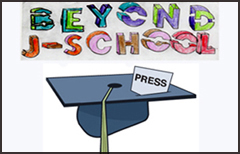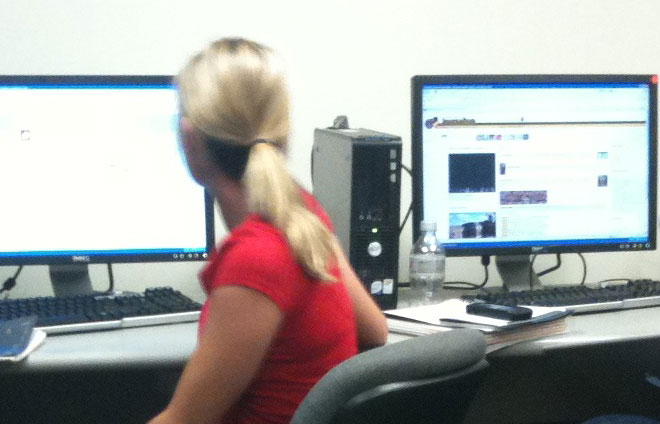Education content on MediaShift is sponsored by Carnegie-Knight News21, an alliance of 12 journalism schools in which top students tell complex stories in inventive ways. See tips for spurring innovation and digital learning at Learn.News21.com.
In a time and age when many of my generation assume the younger generation understands technology, I have been surprised by the number of students who walk into my class and announce that they “don’t know anything about computers.”
It’s a rampant attitude. I beg each and every student who says this to pretend they never said it and try everything I introduce to them in my class. Over the last seven years I’ve been teaching, I’ve seen a slow change that is now very obvious: It isn’t just a belief that they don’t know about computers, many students are simply afraid to fail.

I am open to writing about my professional failures for this site. I thrive from the learning experience that comes from doing everything I can, even if I fail. So my students’ reaction to failure has been difficult to understand, and even more difficult to verbalize.
A Different Approach
When they arrive in my class, I teach students how to go beyond what they already learned in the radio/television sequence at the Missouri School of Journalism. The students know how to produce stories for on-the-air and online. They know how to edit stellar video and audio. But there is another level of multimedia journalism that I try to help them add to an already solid base of knowledge. This can be scary, as many of my students are overachievers who are frightened to get a bad grade. They’re afraid to jump into something new before they even have a chance to fail. I used to just think that was funny and it didn’t interfere with my teaching. But lately I have decided it is time to teach my class differently.
In the past I taught students the basics of software like Flash, Photoshop and Illustrator. I introduced blogging, video conversion tools and many other web-based tools that can make delivering online stories a richer experience. The students who try it all walk away with a knowledge of how things work. But even more important, they understand how to talk about the technology. They may not be experts, but they can talk to an expert and be able to understand his or her needs when they work together on a project.
I will not stop teaching these tools, but I am going to do it with more help. I think I need to spend classroom time presenting my case for the basic knowledge of software instead of teaching it during class time. I plan on going about this campaign in a number of ways.
Four Elements
Here are the four main elements of my new approach:
- First, I want to make sure my students know there is no other time in their life when they will have this much free time to experience and be curious about new tools for journalism. I’m handing them access to tools to explore and an outlet to share their lessons. Each of my students work in the KOMU-TV or KBIA-FM newsrooms. (KOMU is a university-owned local NBC station; KBIA is the local NPR station.) They also have a chance to work with a number of social media applications for each of the newsrooms.
- Second, instead of focusing on the software in the classroom, I will spend more time showing examples of what technology can produce for the journalism industry. I hope to introduce my students to a number of people in the profession (thanks to Skype) who have a wide range of skills. I hope to use their backgrounds to explain why it’s important to break past fear of the new.
- Third, I have added five online courses from Lynda.com to my class, which my students will be able to take at their own pace. I will not teach software in class, but I will hold open, non-mandatory meetings for students who are still confused and want to work through the confusion.
- At the end of the class, I will ask students to use the lessons they learned with Lynda.com to produce content that will benefit their online portfolio. I will expect examples of photo editing, graphic creation and, as extra credit, a use of interactive graphics. I’m hoping that by requiring content that will benefit the student portfolios, it will motivate my students to jump into learning software.
Not all of my students are afraid of technology. The shifts I am making in my class are focused on helping this group of students succeed just as well as the more fearful ones. And I’m ready to push ahead with these changes with the knowledge that they too could fail.
Jennifer Reeves worked in television news for the majority of her career. In the last six years, she has moved from traditional journalist to non-traditional thinker about journalism and education. Jen is currently the New Media Director at KOMU-TV and komu.com. At the same time, she is an associate professor at the Missouri School of Journalism and was a part of the inaugural class of Reynolds Journalism Institute fellows (2008-09).
Education content on MediaShift is sponsored by Carnegie-Knight News21, an alliance of 12 journalism schools in which top students tell complex stories in inventive ways. See tips for spurring innovation and digital learning at Learn.News21.com.

